EPJ A Topical Collection: Quantum Computing in Low-Energy Nuclear Theory
- Details
- Published on 23 June 2025
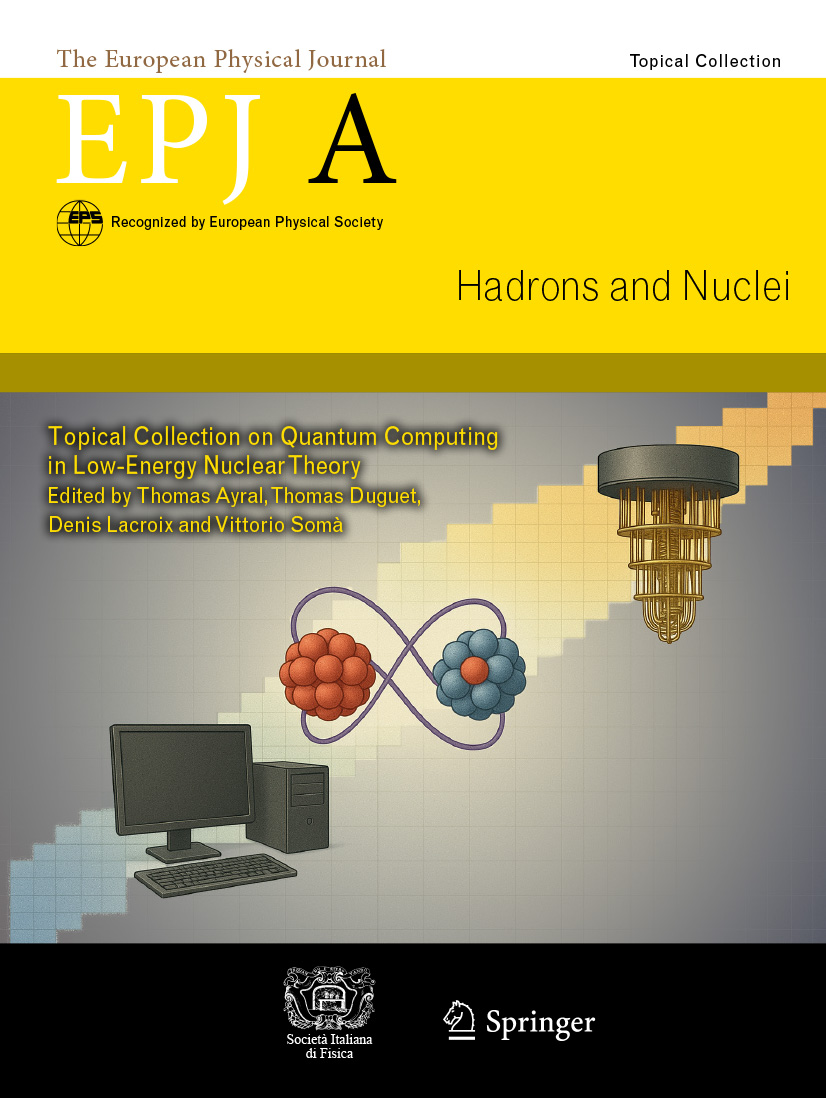
Guest Editors: Thomas Ayral, Thomas Duguet, Denis Lacroix, Vittorio Somà
Quantum computing has rapidly evolved from a theoretical concept to an active field of research with real-world prototypes. Major companies and startups are racing to build increasingly powerful quantum devices, and first demonstrations of so-called “quantum advantage” have already taken place. While these machines remain limited by noise and the number of qubits, the emergence of the NISQ (noisy intermediate-scale quantum) era, and the first indications of a transition towards Fault-Tolerant machines are fueling innovations across many disciplines. Nuclear physics, with its complex many-body problems, is one of the most promising areas to benefit from these advances.
This topical collection explores the growing intersection between quantum computing/quantum information and low-energy nuclear physics/related areas. It brings together a set of articles aimed at both introducing scientists to this evolving field and highlighting recent breakthroughs. The focus is on how quantum devices—despite their current limitations—can be used to simulate highly correlated quantum systems such as atomic nuclei. These simulations may in the future eventually tackle problems that are currently beyond the reach of even the most powerful classical supercomputers.
EPJ A Topical Collection: Short-Range Correlations and the EMC Effect
- Details
- Published on 10 June 2025
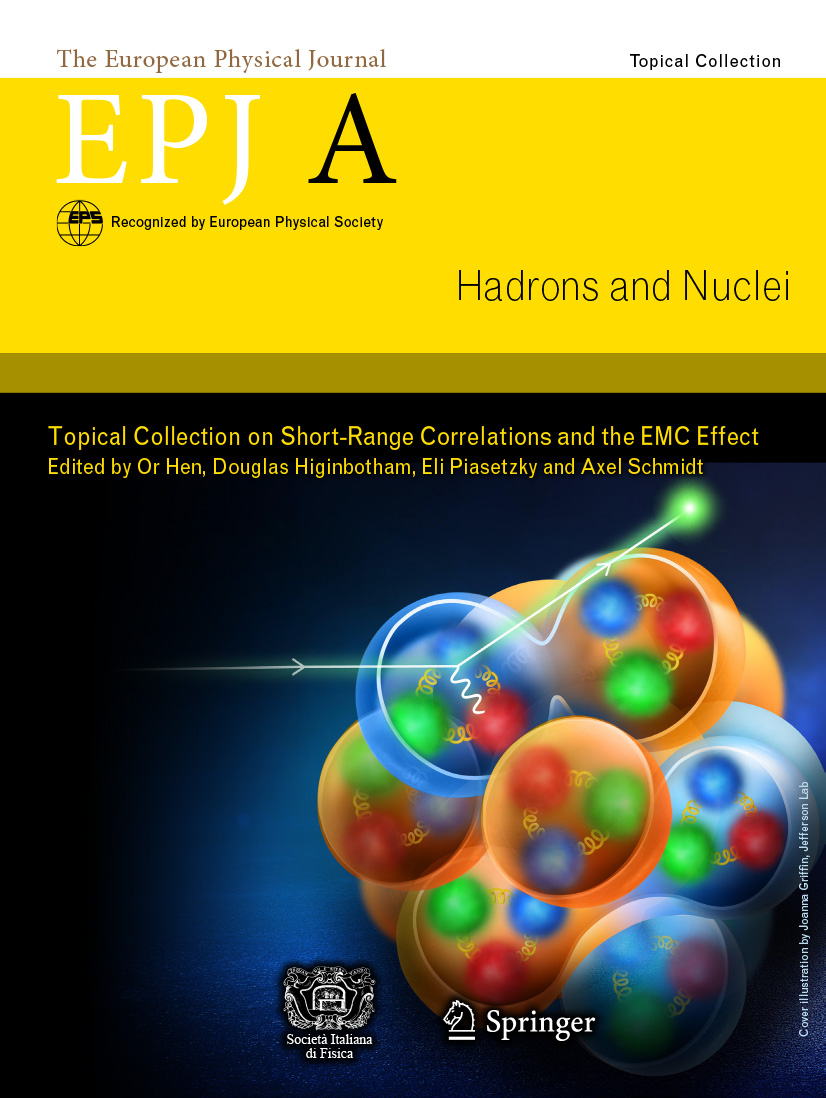
Guest Editors: Or Hen, Douglas Higinbotham, Eliezer Piasetzky, Patrizia Rossi, Axel Schmidt
Short-range correlations (SRCs) between nucleons are to be a universal feature of nuclear structure, seen across the nuclear chart. Correlated nucleons in very close proximity are believed to interact much more strongly with each other than with the rest of the nucleus, leading to a separation of scales. In momentum space, correlated pairs of nucleons have very large relative momenta - larger than the typical nuclear Fermi momentum - while also having a small center-of-mass momentum, i.e., the momentum is balanced within the pair. Because nucleons in SRCs experience a high local nuclear density and tend to have high virtuality, they are an exciting laboratory for learning about dense nuclear matter, the isospin structure of the short-distance nucleon-nucleon interaction, and the role of non-nucleonic degrees of freedom in nuclear structure
EPJ A Topical Collection: Radiative corrections: from medium to high energy experiments
- Details
- Published on 16 May 2025
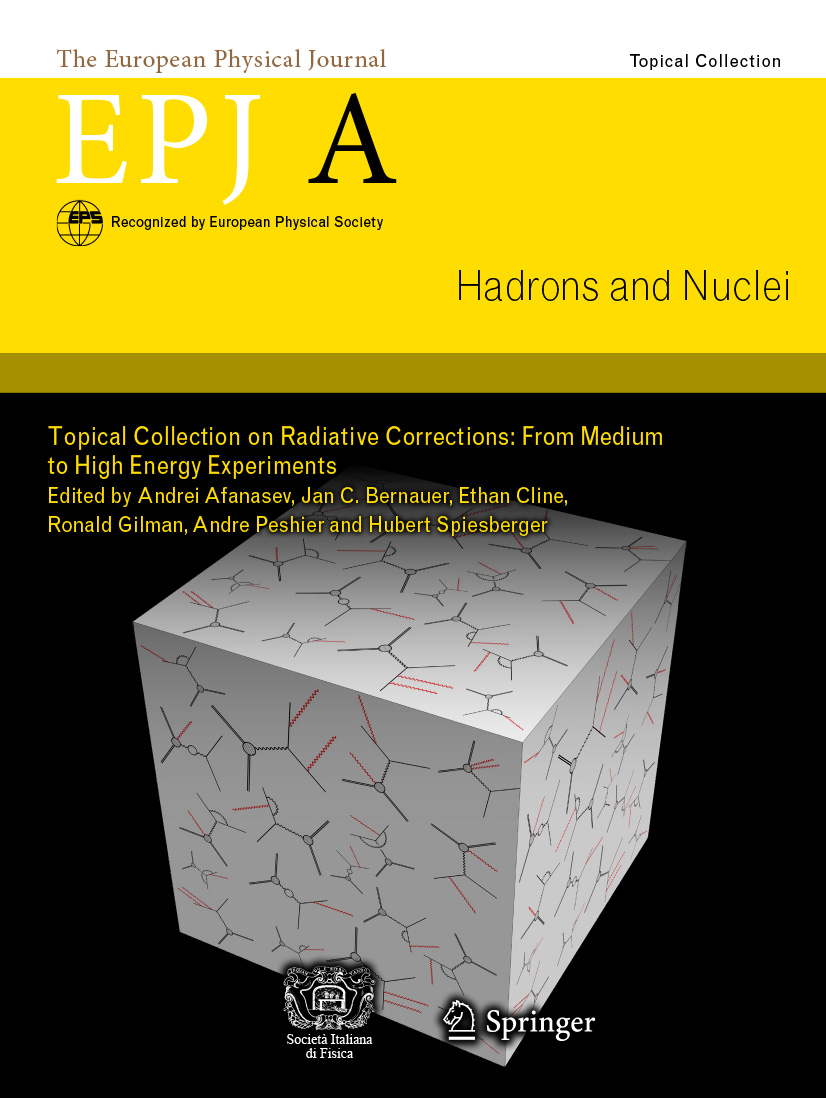
Guest Editors: Andrei Afanasev, Jan C. Bernauer, Ethan W. Cline, Ronald Gilman, André Peshier, Hubert Spiesberger
Modern lepton-scattering experiments at medium to high energy achieve a precision that requires an accurate understanding of radiative corrections, including the re- sulting uncertainties of relevant observables in the given experimental setting. The development of associated tools is a subject of active research. It is a showcase for a fruitful interplay between theoretical and experimental efforts, and of particular importance with regard to the ongoing experimental program at Jefferson Lab and to the future Electron-Ion Collider at the Brookhaven National Lab.
This Topical Collection focuses on spin-polarized and unpolarized fixed target ex- periments with electrons, e+e− collisions, meson decays, and elastic e±p and μ±p scattering, from both experimental and theoretical perspectives.
The articles included in the Topical Collection are available here and are freely accessible until 16 July 2025. For further information read the Editorial.
EPJ A Topical Collection: Heavy and Super-Heavy Nuclei and Elements: Production and Properties
- Details
- Published on 12 May 2025

Guest Editors: Nicolas Alamanos, Maria José Garcia Borge, Sigurd Hofmann, Peter Möller, Andrey G. Popeko
Interest in the possible existence of elements (SuperHeavy Elements, SHE) at the next doubly-magic numbers beyond 20882Pb126, sufficiently stable to allow experimental studies of their properties, has been around since at least the 1950ies. In analogy with the magic neutron number 126 it was assumed that the next magic proton number would be Z = 126. However in the mid sixties it was realized that already available, calculated single-particle diagrams showed that Z = 114 would be a more plausible next magic proton number. This realization, the advent of the Strutinsky method, and improving experimental facilities led to many theoretical studies of SHE properties and to experimental efforts to form those. However in the next 15 years or so only a very few new elements (up to Z = 106) were discovered, none near the postulated island of stability. In a Nature article in 1979 Hermann reviewed the status and presented a somewhat bleak view of future prospects. Others had even remarked that the earlier Nobel symposium 27 in 1974 seemed to be the funeral services for SHE.
EPJ A Topical Collection: From Reactors to Stars
- Details
- Published on 03 April 2025

Guest Editors: Maurizio Busso, Maria Lugaro, Alberto Mengoni, Rene Reifarth and Michael Wiescher
The EPJA Topical Collection “From reactors to stars" is dedicated to the life and work of Dr. Franz Käppeler who died on 20 November 2021, after a short illness. He was one of the leading experimentalists in the field of experimental nuclear astrophysics in Germany and worldwide for decades. Many of the authors of this volume knew Franz personally and many others were directly or indirectly inspired by his work and personality. All publications in this volume report on current research and are not necessarily actual work by Dr. Käppeler.
The articles included in the Topical Collection are available here and are freely accessible until 31 May 2025. For further information read the Editorial.
EPJ A Topical Collection: The Nuclear Many-Body Problem
- Details
- Published on 19 February 2025
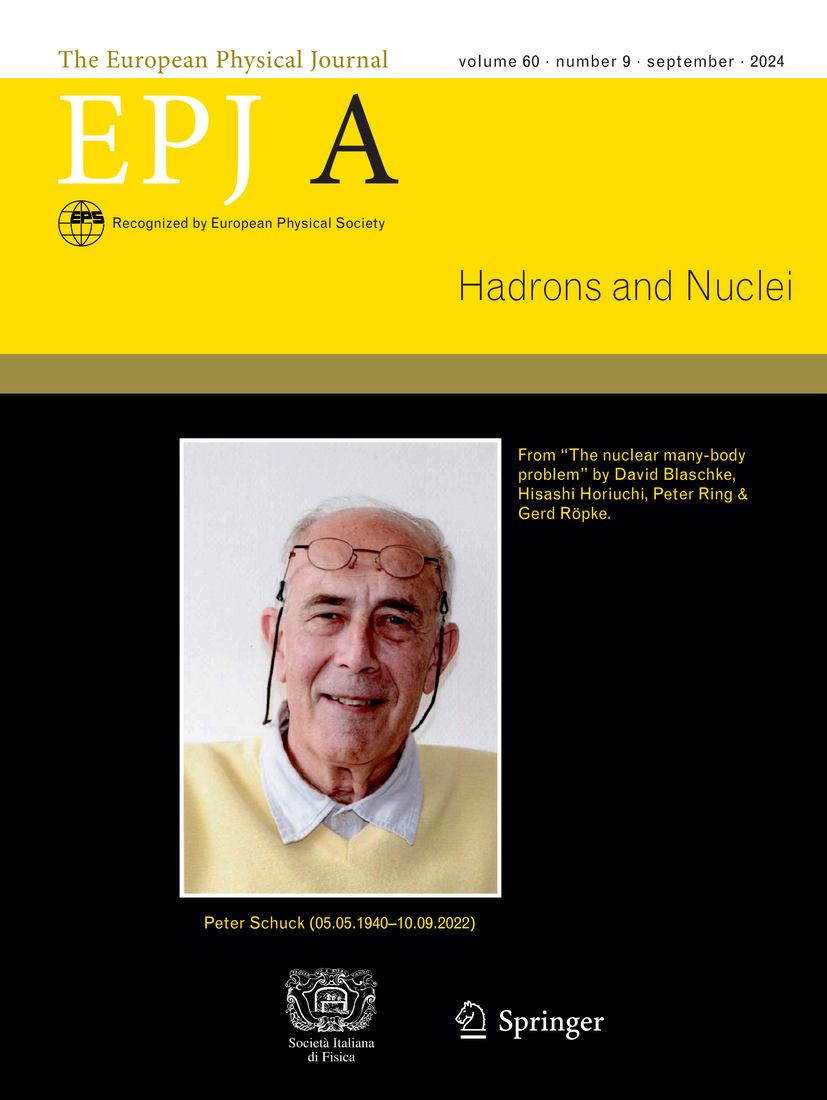
Guest Editors: David Blaschke, Hisashi Horiuchi, Peter Ring, Gerd Röpke
This Topical Collection of the European Physics Journal A is devoted to recent progress in the nuclear many-body problem. In particular, it aims at a comprehensive compilation of developments related to the work of a pioneer in that field, Peter Schuck, who passed away in 2022.
The Topical Collection is considered as addendum and continuation of the seminal textbook of P. Ring and P. Schuck on “The Nuclear Many-Body Problem”, where different concepts have been elaborated further within a broad international collaboration. For instance, the quasi-particle approaches in connection with nuclear superfluidity and cluster formation in nuclear systems, in particular alpha-particle condensation and quartetting at subsaturation densities, have been brought forward. These advances obtained in the nuclear many-body problem can also be applied to other systems, for instance to solid state physics.
The articles included in the Topical Collection are available here and are freely accessible until 31 March 2025. For further information read the Editorial.
EPJ A Topical Collection: Nuclear photonics: overview and perspectives
- Details
- Published on 17 February 2025
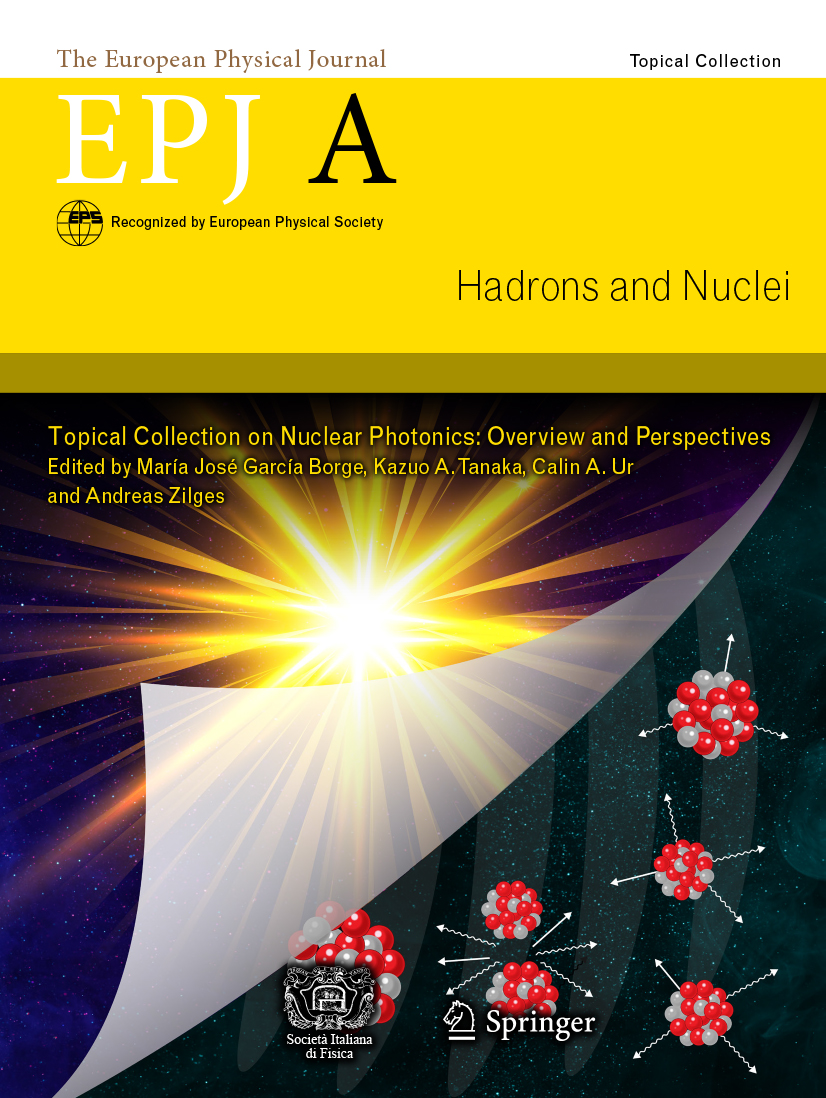
Guest Editors: María José García Borge, Kazuo A Tanaka, Calin Alexandru Ur and Andreas Zilges
Nuclear Photonics is a major development of Photonics, which has undergone a rapid evolution and transformation over the past decade. Until recently, the field was mainly related to the photonuclear reactions induced by gamma rays, in the range of MeV energy. The Chirped Pulse Amplification method has been refined since its discovery in 1985, leading to the development of laser systems able of achieving a focused intensity as high as 1023 W/cm2. At this level of intensity, the laser-matter interaction enters the relativistic regime and the laser beam can penetrate the solid density without any difficulty, accelerate the electrons and ions and generate radiation in the gamma-ray energy range from a few hundred MeV to GeV. The comprehension and control of these interactions will facilitate the exploration of novel domains within nuclear photonics by using intense laser light.
EPJ A appoints new Editors-in-Chief as of 1 January 2025
- Details
- Published on 17 December 2024
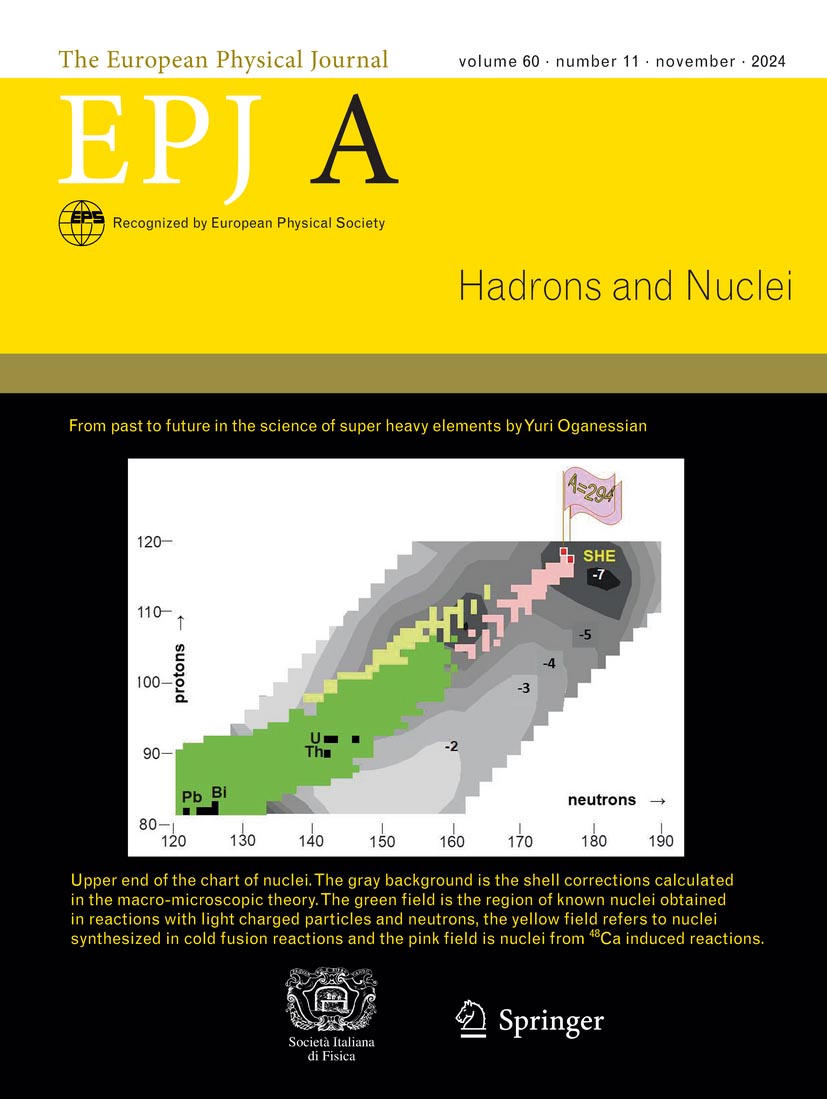
EPJ A is pleased to announce the appointment of new Editors-in-Chief, Prof. Silvia Leoni for the section Experimental Physics and Prof. Dario Vretenar for the section Theoretical Physics I: Nuclear Physics, while Theoretical Physics II: Hadron Physics and Quark Matter continues to be headed by Prof. David Blaschke. Both former Editors-in-Chief, Prof. Maria Jose Garcia Borge and Prof. Thomas Duguet, will remain with the journal as Managing Editors Reviews and Invited Viewpoints and Perspectives, together with Prof. Patrizia Rossi and Prof. Ulf-G. Meißner.
EPJ A Topical Collection: Precision Measurements in Nuclear Physics
- Details
- Published on 12 June 2024
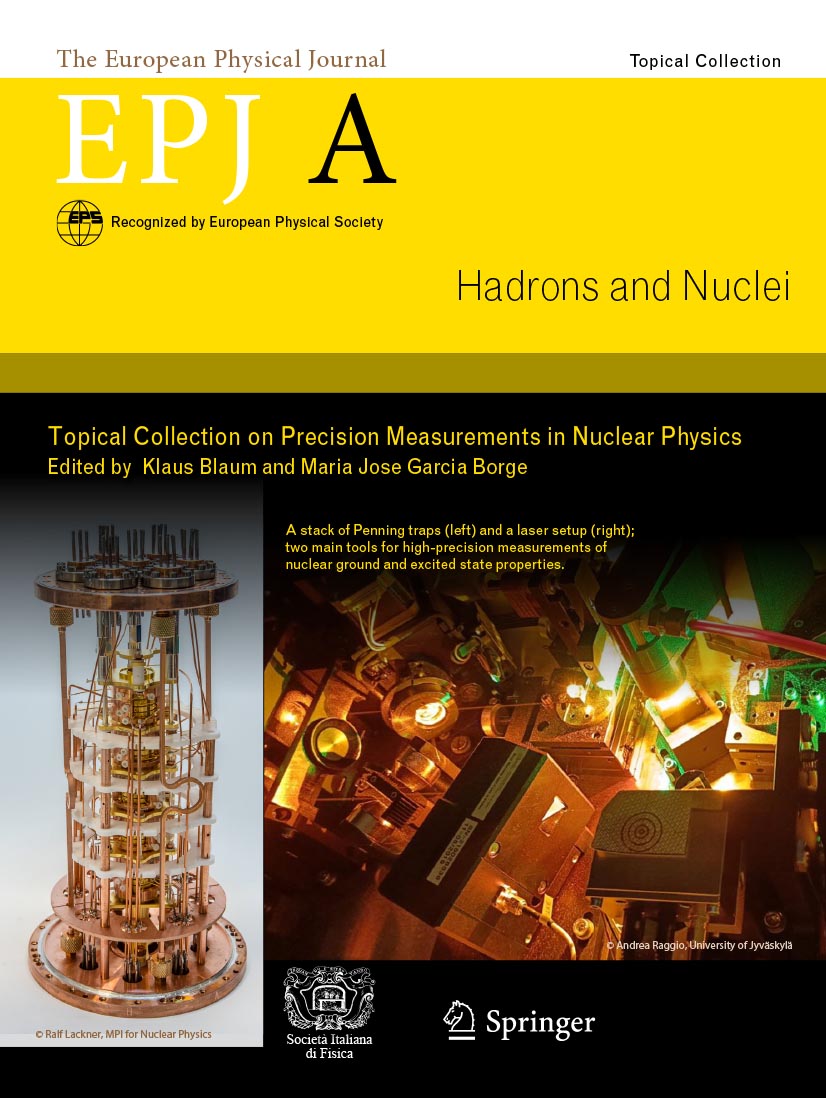
Guest Editors: Klaus Blaum, Maria Jose Garcia Borge
The progress made in recent years on the precision frontier in the determination and prediction of ground and excited state nuclear properties has been amazing. The advances in technology mainly concerning ion traps, storage rings, lasers, high-precision frequency measurements, detectors, and particle beams as well as advances in atom and ion manipulation have allowed for major breakthroughs in the determination of fundamental parameters and quantities of radionuclides such as masses, electromagnetic moments, lifetimes and beta decay correlations. In a similar manner, significant progress has been made in the theoretical description of the nucleus and its properties.
EPJ A Topical Collection: AGATA: Advancements in science and technology
- Details
- Published on 24 January 2024

Guest Editors: Nicolas Alamanos, Maria Jose Garcia Borge, Angela Bracco, Emmanuel Clément, Andres Gadea, Wolfram Korten, Silvia Leoni and John Simpson
The Advanced GAmma Tracking Array (AGATA) is a major European project, involving over 40 institutes in 12 countries, to develop and operate a high-resolution gamma-ray tracking spectrometer. Gamma-ray tracking requires the accurate determination of the energy, time and position of every interaction as a gamma ray deposits its energy within the detector volume. This is achieved by using electrically segmented hyper pure germanium detectors, pulse shape analysis of the digitised signals, and tracking algorithms to reconstruct the full event. The AGATA 4π geometry comprises 180 tapered-hexagonal coaxial detectors. AGATA can measure gamma rays from 10’s of keV to 10 MeV with excellent efficiency and position resolution and has a very high count rate capability. These features result in an instrument with a resolving power of two orders of magnitude larger than previous spectrometers, such as EUROBALL in Europe and Gammasphere in the USA. A similar tracking spectrometer is being constructed in the USA, called GRETA.




